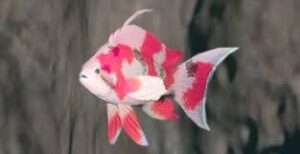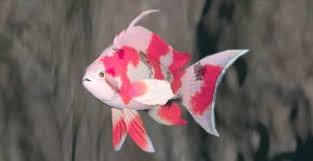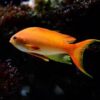The Role of Dragons in Creative Art Competitions: Symbolism, Innovation, and Inspiration

Dragons, one of the most powerful and universally recognized symbols in art, have long played a significant role in various artistic forms. These mythical creatures have appeared in folklore, literature, architecture, and, more recently, in the realm of creative art competitions. As a powerful source of inspiration, the dragon has influenced countless artists, prompting them to explore its diverse meanings, characteristics, and representations. In the context of creative art competitions, the dragon often serves as both a muse and a challenge, motivating artists to push the boundaries of imagination and creativity.
This article delves into the role of dragons in creative art competitions, examining how these creatures serve as a catalyst for innovation and artistic expression, both in traditional and contemporary artistic practices. We will explore the ways in which dragons are used as a subject, symbol, and theme, as well as how they challenge artists to engage with cultural, historical, and personal narratives. Additionally, we will highlight some of the most notable examples of dragon-inspired artwork in art competitions and the broader impact these works have had on the art world.
1. The Symbolism of Dragons in Art
Before exploring the role of dragons in creative art competitions, it is important to understand the symbolic significance of dragons across different cultures. As a mythical creature, the dragon has been a symbol of power, wisdom, mystery, and danger throughout history. These creatures appear in mythologies, religious texts, and folklore across the world, each with its own unique interpretation and meaning.
Dragons in Eastern Mythology
In Eastern cultures, particularly in China, Japan, and Korea, dragons are revered as symbols of strength, luck, and benevolence. Unlike the fearsome and destructive dragons of Western mythology, the Eastern dragon is often depicted as a wise and protective being that embodies the forces of nature. For example, in Chinese culture, the dragon is associated with the Emperor, representing imperial authority, prosperity, and good fortune. In Japan, dragons are believed to be guardians of the elements, often depicted in a serpentine form with control over water, weather, and the seas.
Dragons in Western Mythology
In contrast, Western dragons are often portrayed as malevolent creatures, hoarding treasures and terrorizing villages. The image of a knight slaying a dragon has become one of the most iconic symbols of Western folklore, representing the struggle between good and evil. Despite this, dragons in Western mythology are also seen as powerful creatures that challenge heroes to prove their worth, and in some cases, they symbolize wisdom and transformation.
Dragons as Universal Archetypes
Across all cultures, the dragon represents a universal archetype—an entity that exists between the human and the divine, a symbol of mystery and power. In art, the dragon often symbolizes the eternal struggle between opposites, such as life and death, chaos and order, or destruction and creation. The duality of the dragon’s nature makes it an ideal subject for creative art, where artists can explore both its fearsome and benevolent aspects, reflecting the complexities of human existence.
2. Dragons as a Source of Inspiration in Art Competitions
Creative art competitions are designed to inspire innovation, creativity, and self-expression. Artists are often tasked with interpreting a given theme or subject in a way that demonstrates originality and skill. The dragon, with its rich cultural significance and diverse representations, serves as an ideal source of inspiration for artists looking to challenge themselves and create something unique.
Encouraging Artistic Innovation
Dragons are versatile subjects that can be reinterpreted in countless ways. In art competitions, artists are encouraged to push the boundaries of their creativity and experiment with different mediums, techniques, and styles. The dragon, as a mythical creature, invites artists to think outside the box and explore imaginative depictions. Whether in the form of traditional sculpture, painting, digital art, or mixed media, the dragon challenges artists to convey its power, mysticism, and symbolism in innovative ways.
In competitions, dragons often appear as central themes or specific motifs within a larger narrative. Artists may be asked to incorporate a dragon into a piece of work that addresses broader themes such as mythology, environmentalism, or personal transformation. The challenge lies in interpreting the dragon through a modern lens while staying true to its cultural and historical roots.
Dragon-Inspired Art: Exploring Diverse Styles
Dragons in art competitions are not limited to one style or form. Artists take diverse approaches to the portrayal of dragons, from realistic depictions that mimic the creatures of mythology to abstract representations that convey the essence of the dragon in a more symbolic manner. Some artists focus on detailed, lifelike portrayals of dragons, while others opt for minimalist or surrealistic renditions, using geometric shapes or color palettes to evoke the dragon’s essence without necessarily depicting it literally.
- Realistic Dragons: In competitions that involve traditional techniques such as painting or sculpture, artists often create highly detailed and realistic depictions of dragons, drawing inspiration from classical mythologies. These works typically emphasize the dragon’s physical power, with intricate scales, sharp claws, and fierce expressions.
- Abstract and Conceptual Dragons: Some artists take a more conceptual approach, using dragons as symbols of internal or external forces. For example, an abstract dragon might be represented by swirling shapes, fragmented patterns, or an intense color palette that evokes emotions like fear, wonder, or awe. These interpretations may not directly represent the dragon but instead capture its symbolic essence.
- Fantasy and Surreal Dragons: In the realm of digital art and fantasy-based competitions, dragons are often depicted in imaginative and surreal ways. These works explore the fantastical elements of dragons—flying through otherworldly landscapes, engaging in epic battles, or interacting with magical creatures. The surreal approach allows for limitless creativity and experimentation.
Dragons in Sculpture and Installation Art
In sculpture and installation art, dragons often appear as grand, monumental works designed to capture the viewer’s attention and evoke a sense of awe. Many art competitions feature large-scale sculptures or installations that incorporate dragon motifs, challenging artists to create works that are not only visually striking but also interactive or immersive.
For example, some artists use dragons as part of urban art installations, transforming public spaces with colossal dragon sculptures that invite viewers to engage with the work on a physical level. These installations may incorporate movement, sound, or light, allowing the dragon to come to life in new and unexpected ways. By incorporating modern technologies and materials, artists can reinterpret the dragon as a dynamic and evolving symbol in the contemporary world.
3. Notable Examples of Dragon-Inspired Art in Competitions
Over the years, numerous creative art competitions have featured dragon-themed works that have captivated audiences and gained recognition in the art world. These pieces not only showcase the incredible skill of the artists but also highlight the versatility and enduring appeal of the dragon as a symbol.
The Dragon Parade in the Venice Biennale
The Venice Biennale, one of the most prestigious cultural events in the world, often features works inspired by dragons. In 2019, the Biennale featured a large-scale installation by Chinese artist Zhang Huan, which depicted a massive dragon made from thousands of incense sticks. The dragon’s body, crafted from delicate materials, was suspended in mid-air, surrounded by an ethereal mist created by the burning incense. This installation blended traditional dragon imagery with contemporary themes of spirituality, impermanence, and environmental consciousness.
The International Dragon Art Competition
The International Dragon Art Competition is another example of an event dedicated to showcasing dragon-themed artworks. Held annually, this competition attracts artists from all over the world who submit their works that explore the theme of the dragon. The competition’s mission is to celebrate the global significance of the dragon and provide a platform for both emerging and established artists to showcase their creativity. From digital art to traditional mediums, the competition highlights the vast range of interpretations of the dragon across different cultures and artistic practices.
The Dragon Sculpture in the Singapore Art Biennale
The Singapore Art Biennale also featured a striking dragon-inspired sculpture by artist Ng Eng Teng. The sculpture, titled “Dragon Dance,” was a celebration of Singapore’s cultural heritage and the importance of dragons in the country’s history. The work depicted a dragon made from a variety of materials, including bronze and glass, and was designed to be both a tribute to the dragon’s symbolism and a commentary on the rapid urbanization of Singapore. The piece was interactive, with viewers invited to walk around the sculpture and experience it from different angles.
4. The Cultural Impact of Dragons in Art Competitions
Dragons in art competitions not only inspire innovation and creativity but also foster a deeper understanding of cultural traditions and global interconnectedness. By engaging with the rich mythology surrounding dragons, artists can explore themes such as cultural identity, history, and the role of mythical creatures in contemporary society.
In a globalized world, dragons serve as a universal symbol that transcends geographical and cultural boundaries. They provide a means for artists to explore shared human experiences, such as the battle between good and evil, the quest for wisdom, and the power of transformation. Through dragon-inspired art, artists can create works that resonate with diverse audiences and challenge viewers to rethink the relationships between myth, history, and contemporary life.
5. Conclusion: Dragons as Timeless Symbols of Creative Expression
The role of dragons in creative art competitions is multifaceted and ever-evolving. As both a source of inspiration and a challenge for artists, the dragon encourages creativity, innovation, and artistic exploration. Whether depicted realistically or abstractly, in sculpture or digital art, the dragon continues to captivate the imagination and inspire artists to push the boundaries of their craft.
In the world of art competitions, dragons provide a unique opportunity for artists to engage with cultural traditions, explore personal narratives, and create works that speak to the timeless and universal themes of power, transformation, and mystery. The enduring appeal of dragons in creative art competitions reflects their lasting significance as symbols of creativity, myth, and imagination.


